The summer of 2022 saw Doncaster Rovers go through something of a rebuild, both within the squad and behind the scenes. This was a result of a torrid campaign in EFL League One where they spent the majority of the season in the relegation zone and were eventually relegated to League Two.
One of the players brought in to give the attacking ranks a bolster was Kyle Hurst, a 20-year-old winger signed from Birmingham City. Hurst enjoyed some time in the U21s squad for the Blues while training with the first team on more than one occasion – he was also sent out on loan to non-league Alvechurch to get some important match experience. Following a successful trial with Doncaster Rovers in pre-season, manager Gary McSheffrey saw enough ability and potential in Hurst to give him a deal at the Eco-Power Stadium.
This scout report will provide a tactical analysis of Hurst’s impact on Rovers so far, giving insight into how he fits into Donny’s tactics, and the danger he has caused in attack in his early days at the club – his dribbling and general ball progression contributing to this. We will look at his performances and data from every competition Rovers have featured in so far this season. That’s EFL League Two, the EFL Carabao Cup, and the EFL Papa John’s Trophy.
Player profile
Kyle Hurst caught the eye of a few clubs around League Two and the National League with his tricky dribbling and close control, along with the attacking threat he poses in the final third. As mentioned, he came through the ranks at Birmingham City and showed impressive flashes at the Championship club’s U21 squad in the Premier League 2, but they clearly didn’t have enough faith in his potential to keep him on their books – Doncaster are currently benefiting from that decision.
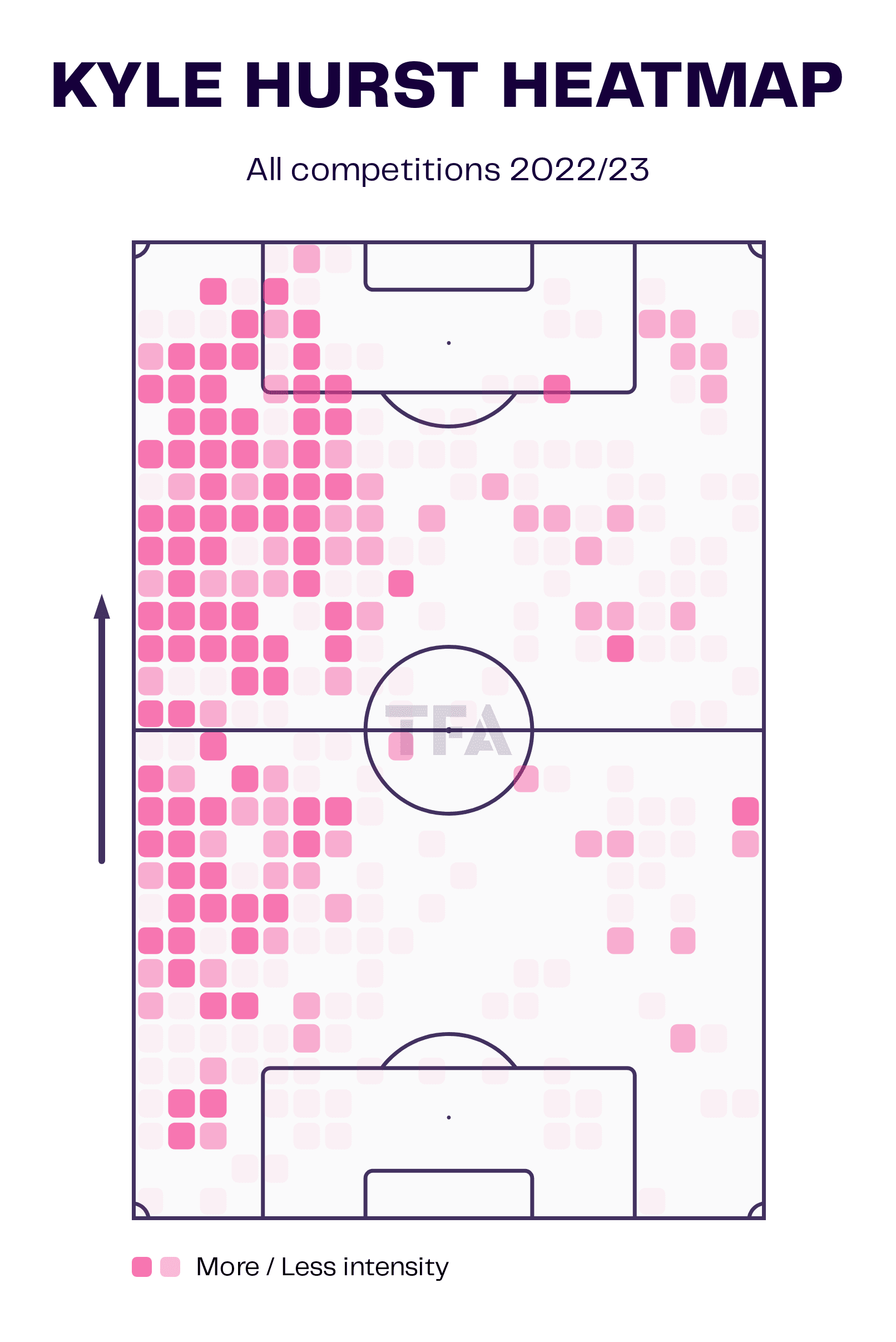
As we can see from his heatmap, Hurst has been most present on the left flank. We can see that he offers some assistance defensively and is required to track back, in line with the club’s tactics. The heatmap also shows us that he likes to cut inside around the edge of the box to use his stronger right foot, rarely driving towards the byline.
Dribbling ability
It goes without saying that dribbling is an essential skill for a winger, and it is currently Hurst’s biggest asset. He has displayed an ability to run with the ball at speed to beat defenders – both when cutting inside or sticking to the touchline. This segment shows us how he finds success in those areas, along with some data visuals to give a clearer idea of his contribution.
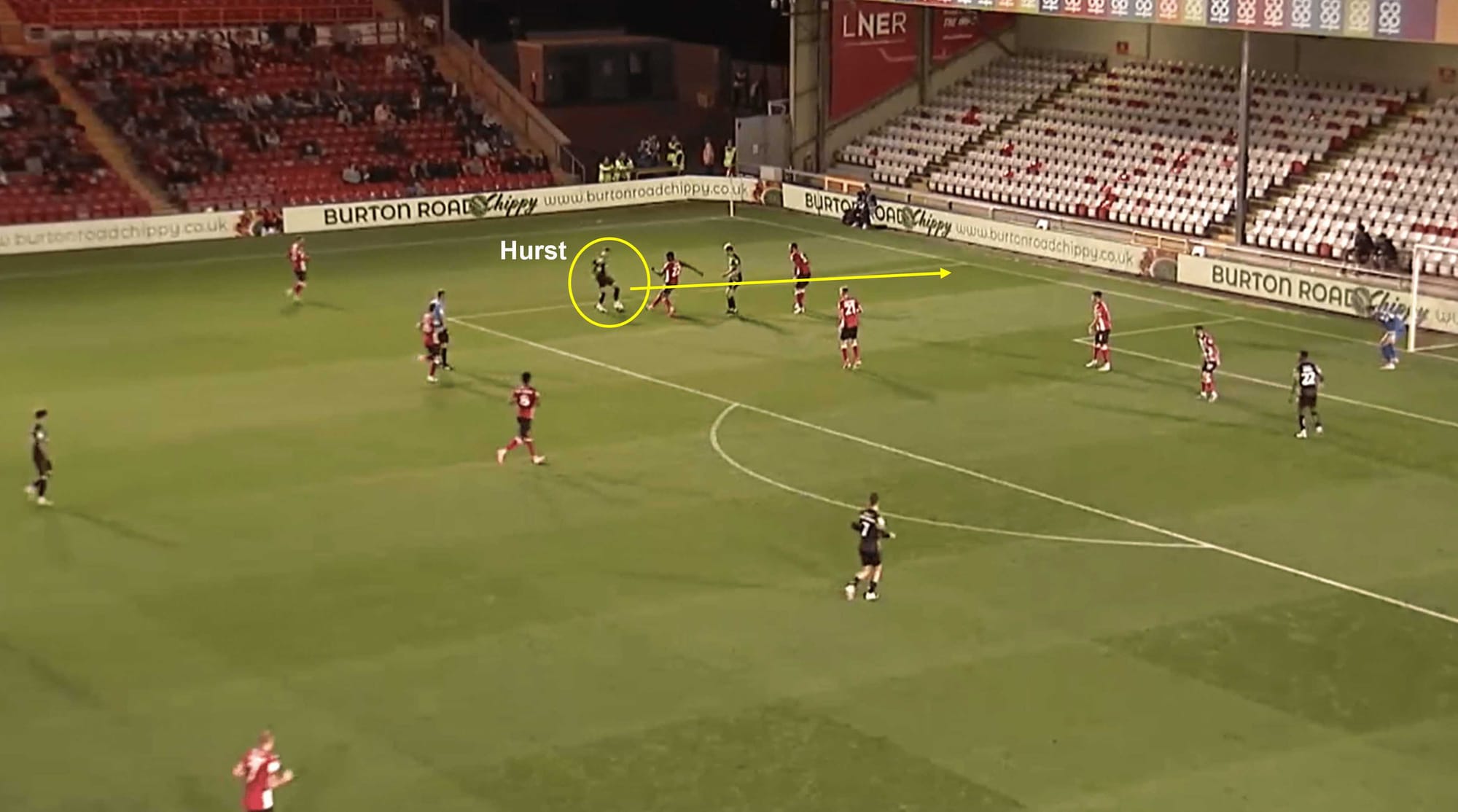
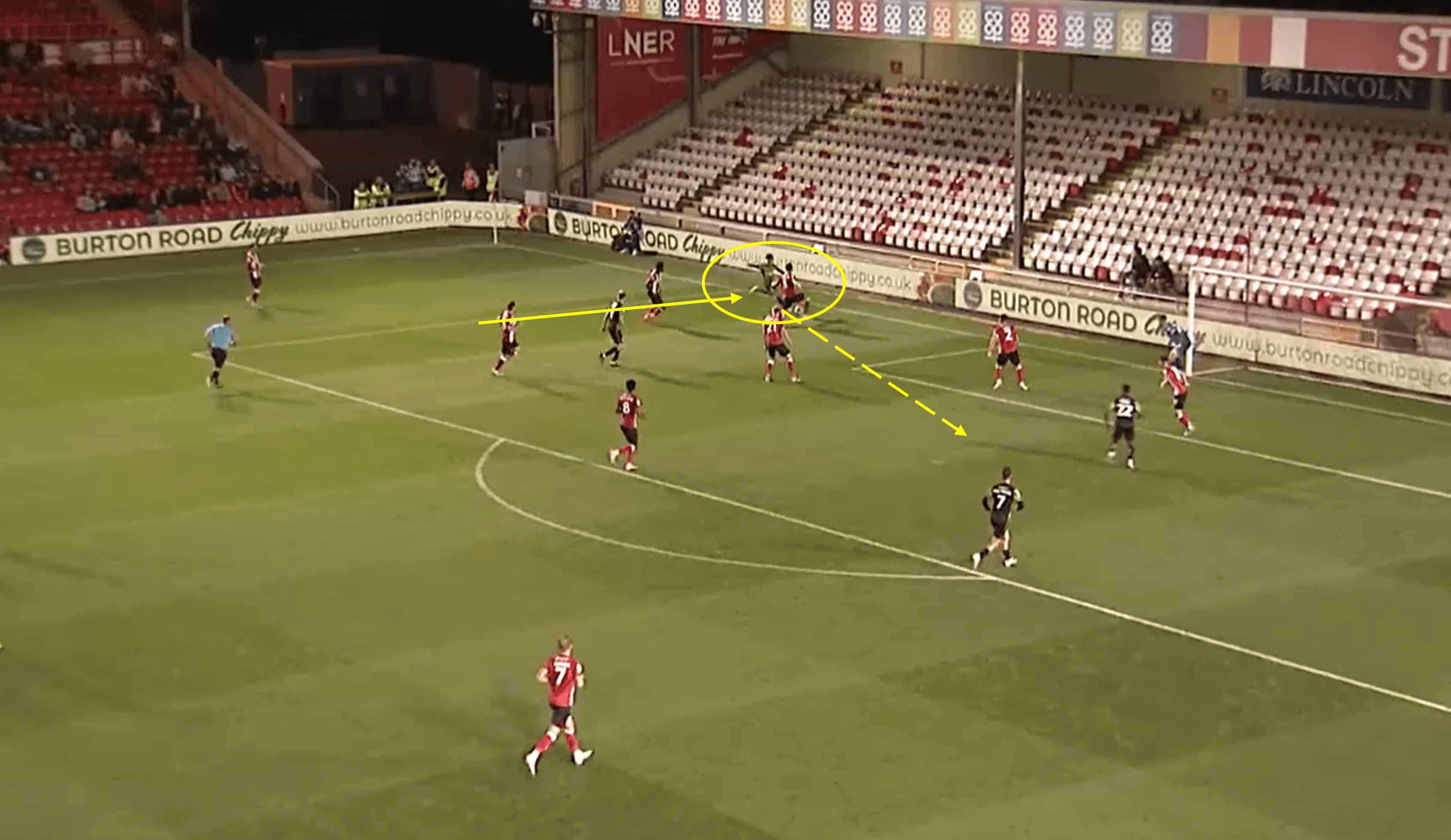
This first example shows us Hurst excelling in a 1v1 situation before putting a dangerous cross into the box. He receives the ball at the corner of the box and fronts up with the Lincoln City defender. Using his close-control footwork and then acceleration, Hurst shifts the ball past the defender, and drives towards the byline, before using his weaker left foot to deliver the cross – turning a promising attacking phase into a dangerous chance on goal, in this case, was a result of Hurst’s individual efforts.
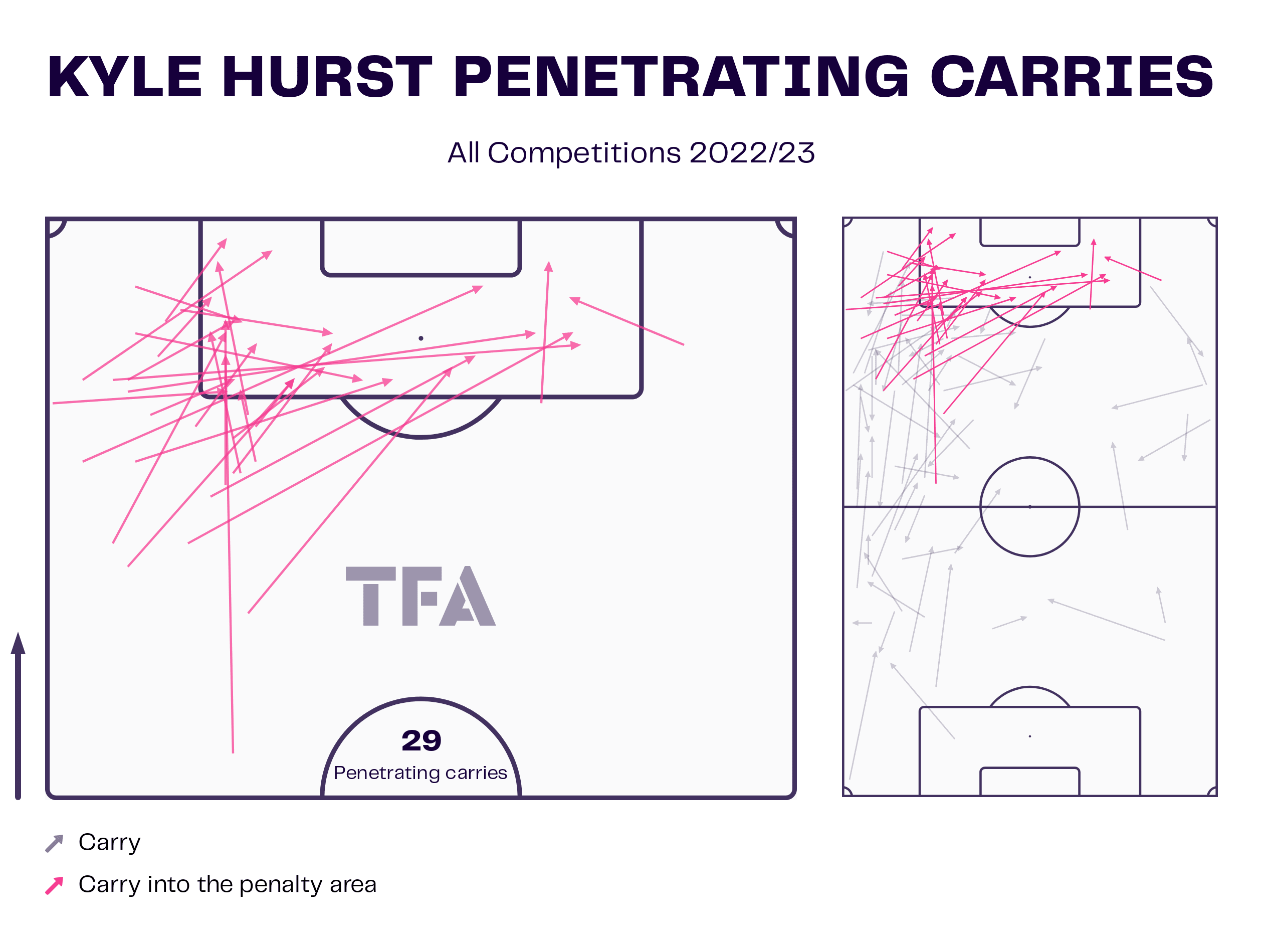
The visuals above demonstrate Hurst’s ability to carry the ball into dangerous areas of the pitch. As we can see, most of his penetrating carries follow the pattern of starting from a wide left position and cutting inside to drive into the box, but he also shows an ability in carrying the ball in other areas of the pitch, which can be particularly useful in carrying his team’s possession into the next third and relieving the pressure on the defence. The visual also shows that he is confident and effective in carrying the ball through midfield areas which can greatly contribute to building an attack.
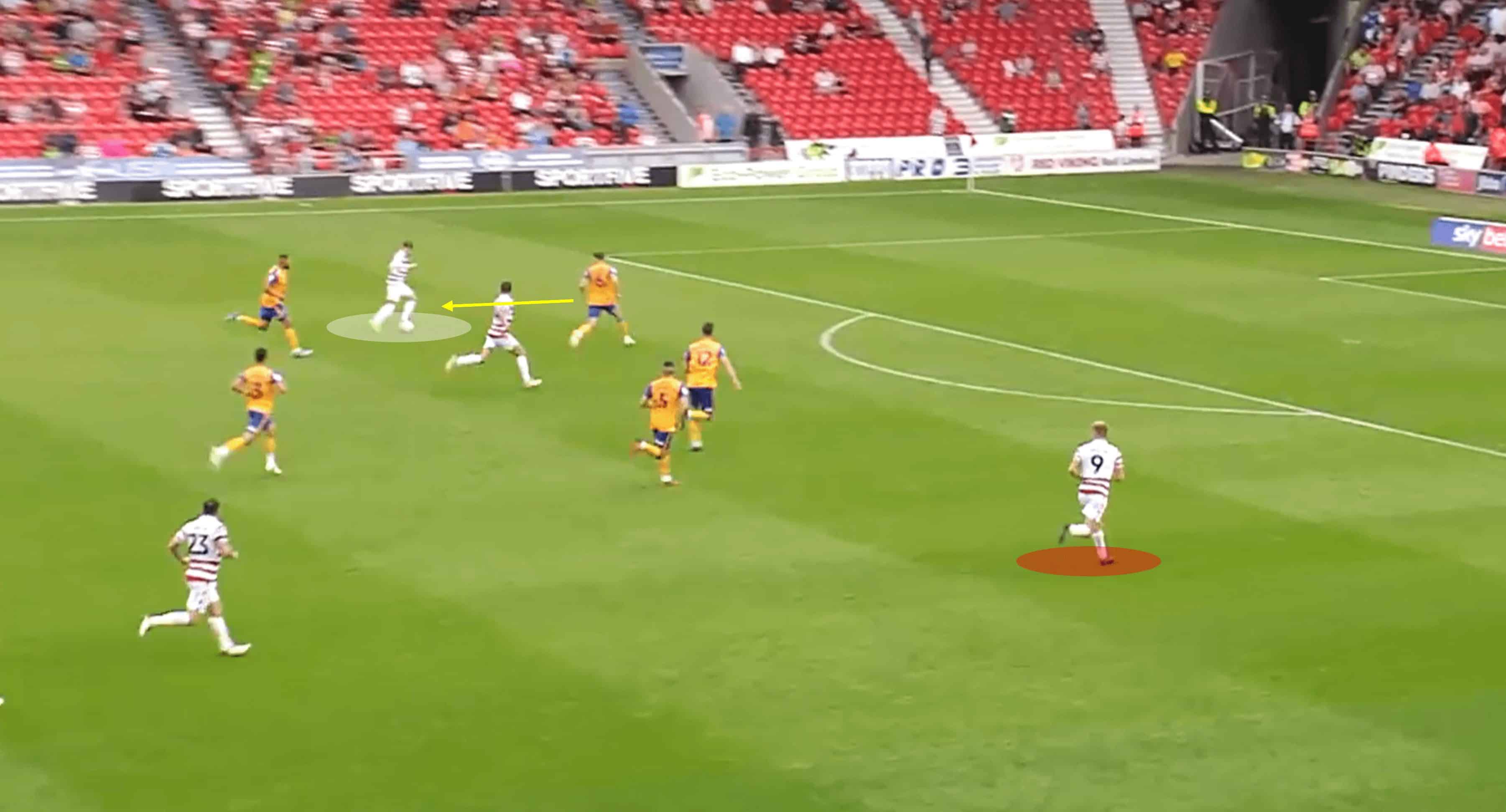
This next example shows Rovers attacking following a transition, giving them a chance to hit Mansfield on the break against a disorganised backline. Hurst collects the ball as Donny enter the final third before being fronted up by the Mansfield defender.
While Hurst showed composure and good close control to keep the defender at bay to this point, it also highlighted an area of his game that could use some sanding. As a winger, in these situations obviously, he is naturally going to focus on beating the opponent, but if he had lifted his head to assess his options, he might have seen the red highlighted George Miller in acres of space. A lofted pass into the Doncaster striker could’ve given them a big chance on goal.
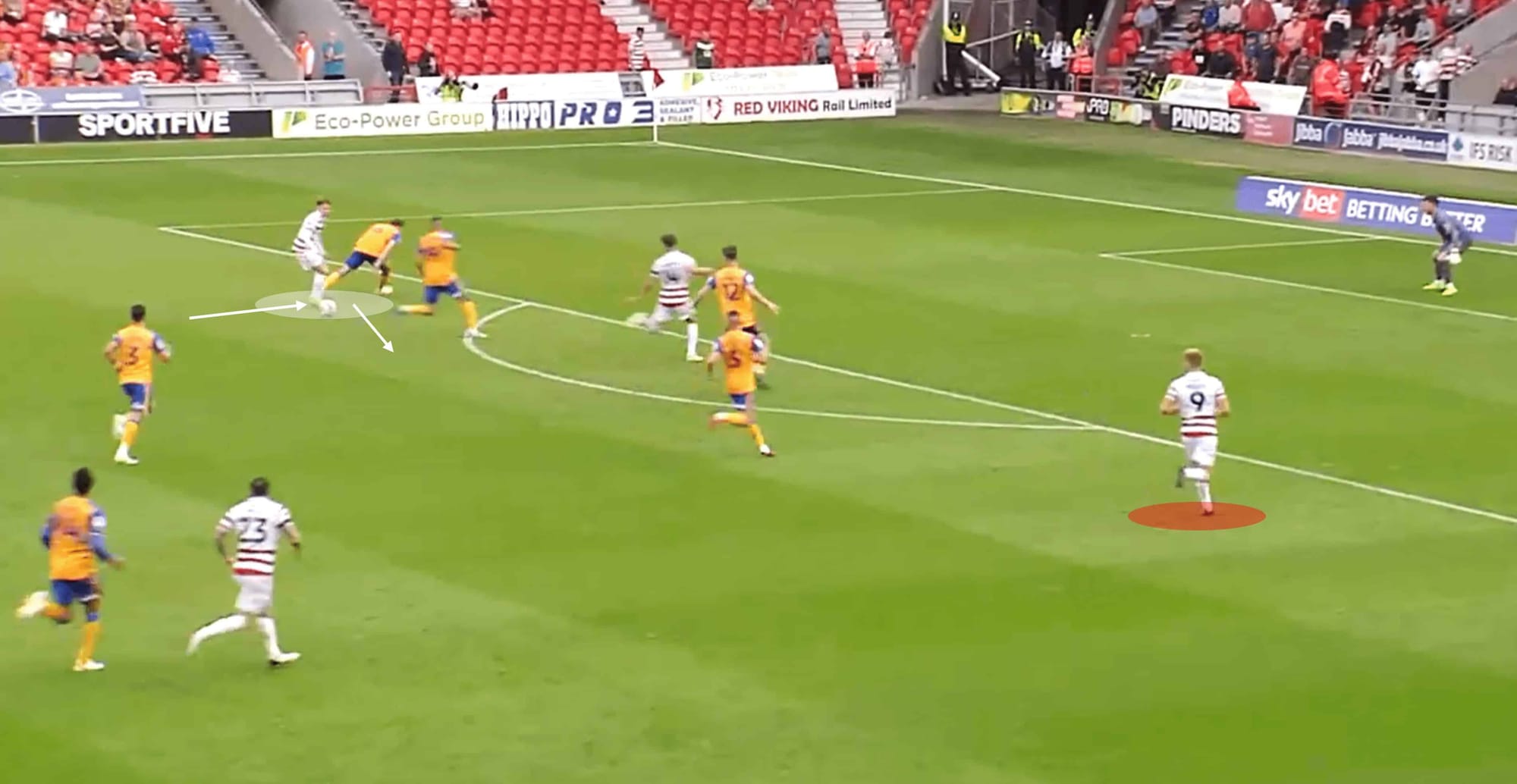
Instead, Hurst continued in his solo surge. He managed to wrong-foot the Mansfield defender before cutting inside. Again, at this point, the George Miller option was still very much alive – in Hurst’s defence, Miller should have been screaming for that ball. Hurst ended the attack by unleashing a dangerous low shot which caused some panic in the Mansfield keeper but did no damage.
Attacking contribution
At just 20 years of age, Hurst obviously has some years to go before reaching the peak stage of his career, but he already has some traits in his arsenal that bode well for his future. He has chipped in with three goals so far this term – each one an impressive strike too. It’s not just his goals that make him a threat, he also creates dangerous chances for his teammates: this segment provides an analysis of how Hurst operates in attack.
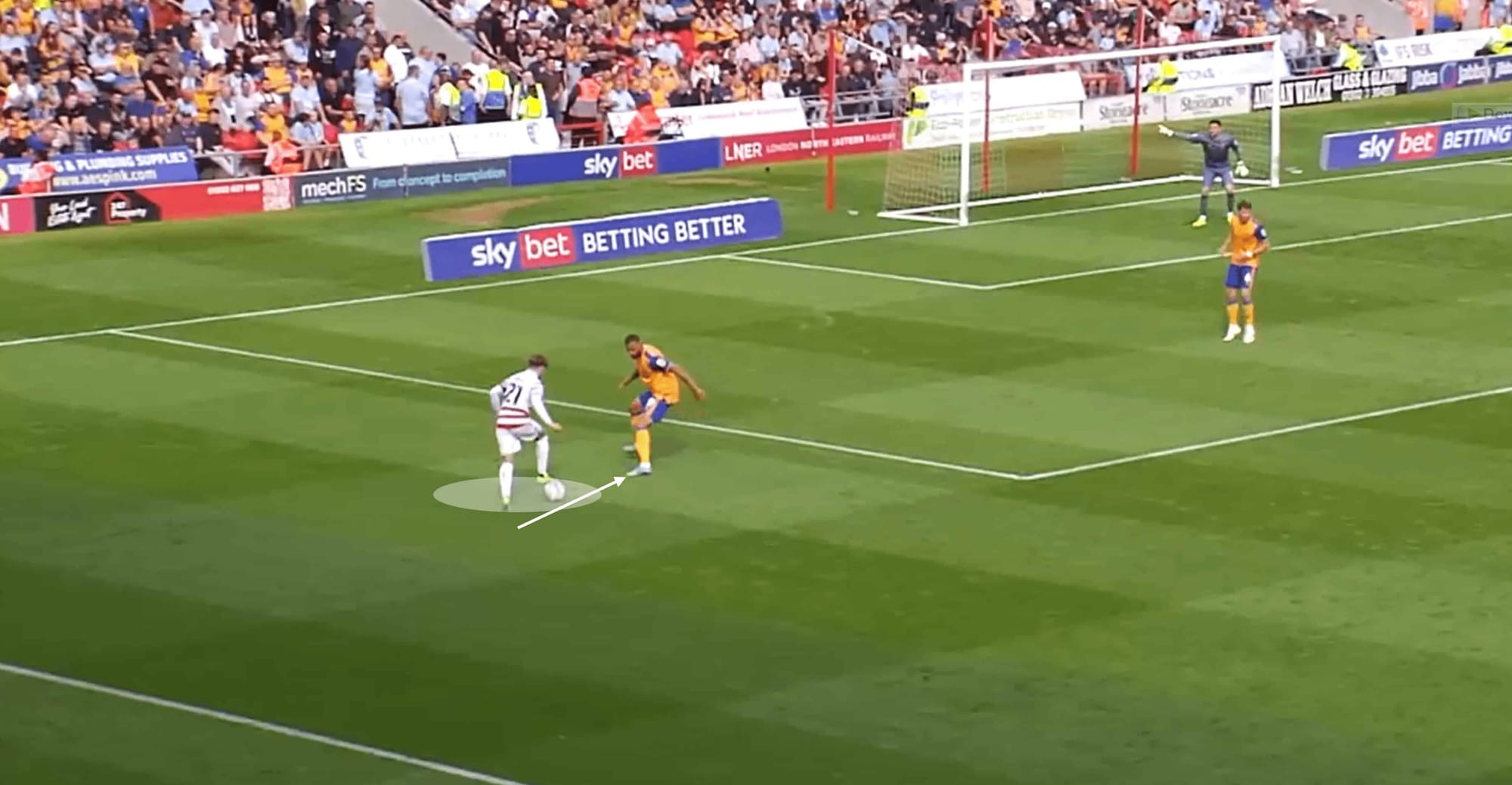
This first example involves Hurst creating a good chance on goal after some good dribbling in a 1v1 scenario – noticing a theme? He invites the defender out by slowly dribbling inside rather than bursting forward – this enabled Hurst to get into the situation you see above, a situation he relishes. From here, he is able to use his tricky dribbling to force the defender backwards, allowing Hurst to gain yards towards the box.
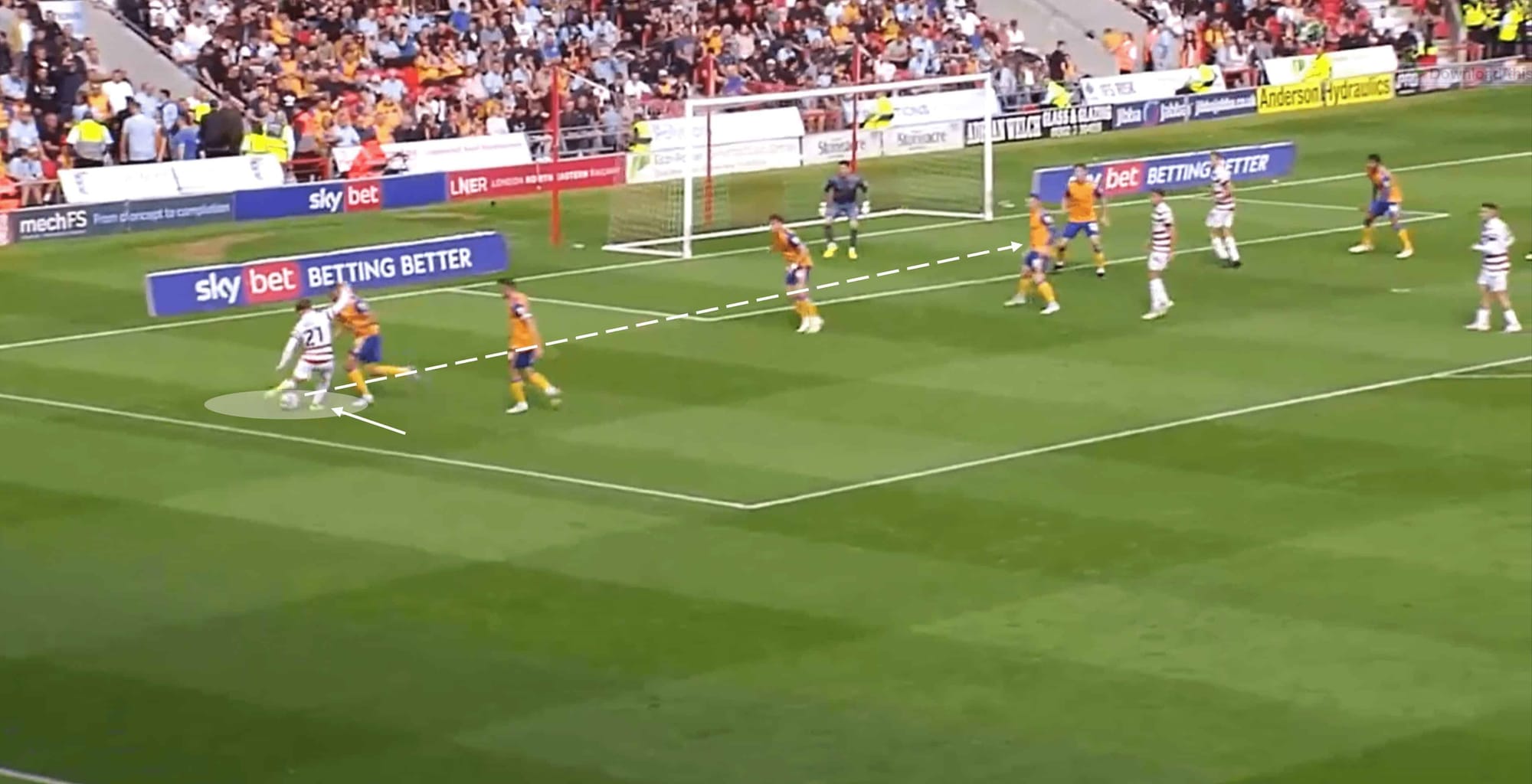
He throws what appeared to be a curveball to the defender by shifting the ball and driving towards the byline with the ball on his left foot, rather than driving inside to use his favoured right foot. The rapid turn to get into the position you see above was difficult for the defender to follow, which contributed to him not being able to block the following low ball fired in by Hurst. A severely dangerous ball was put across the six-yard box by the winger, but no Rovers forward was able to get on the end of it.
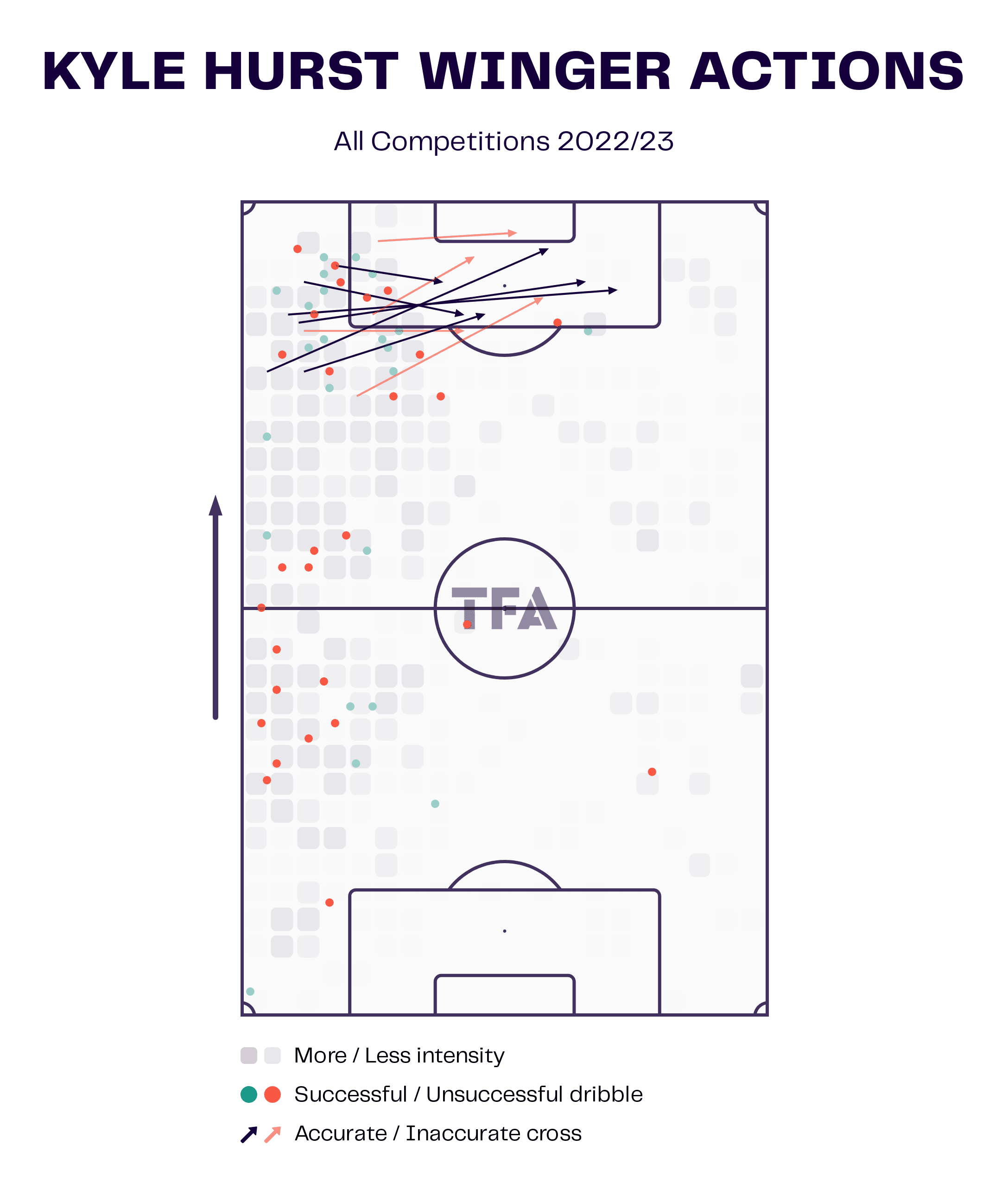
This visual gives us an idea of Hurst’s contributions as a winger, but on a wider scope. By looking at his successful dribbles and accurate crosses, we can see he has the ability to be very effective around the edge of the box. It is also positive to see that the failed dribbles and crosses don’t dent his confidence in attempting it again in the future.
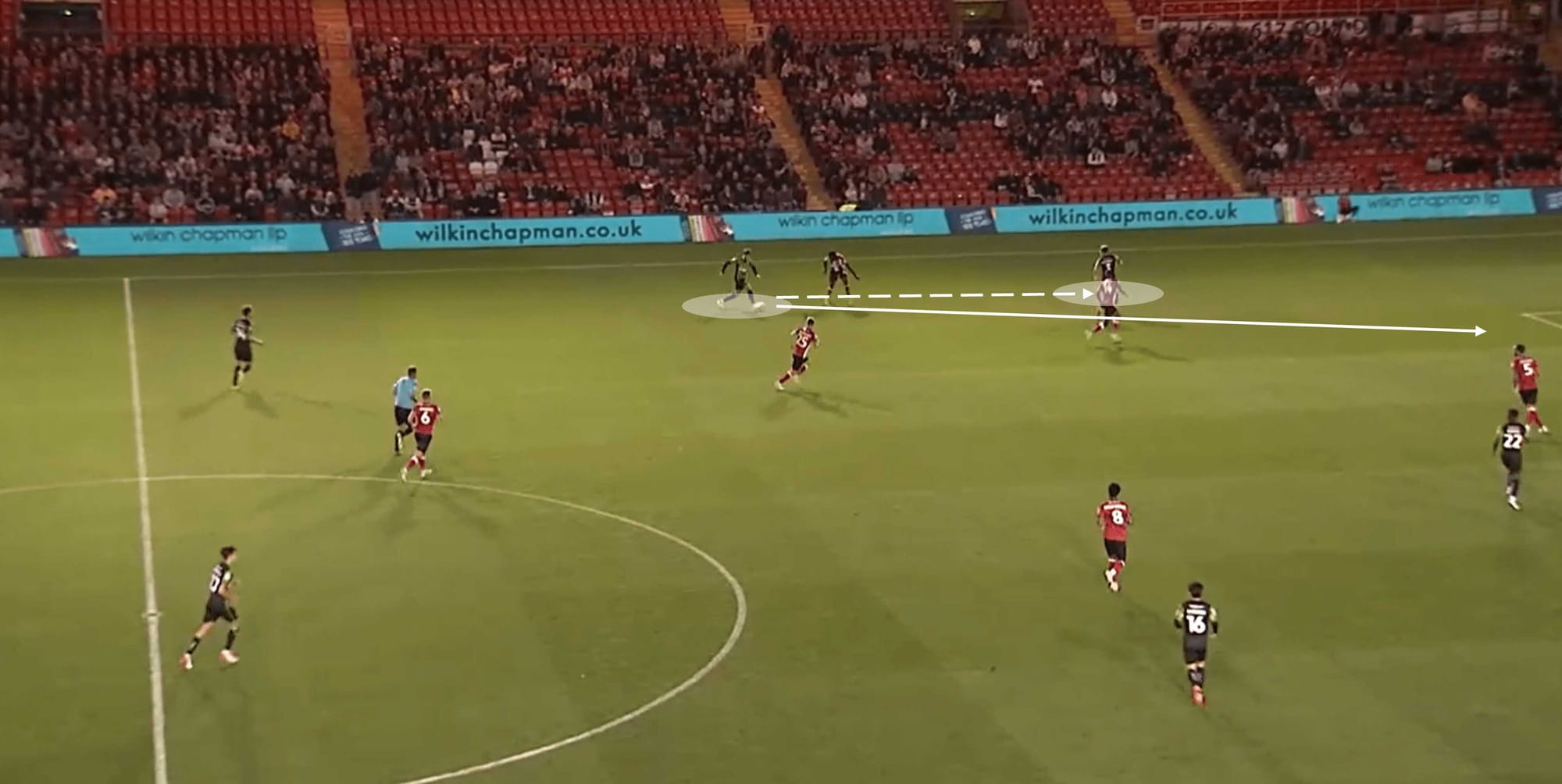
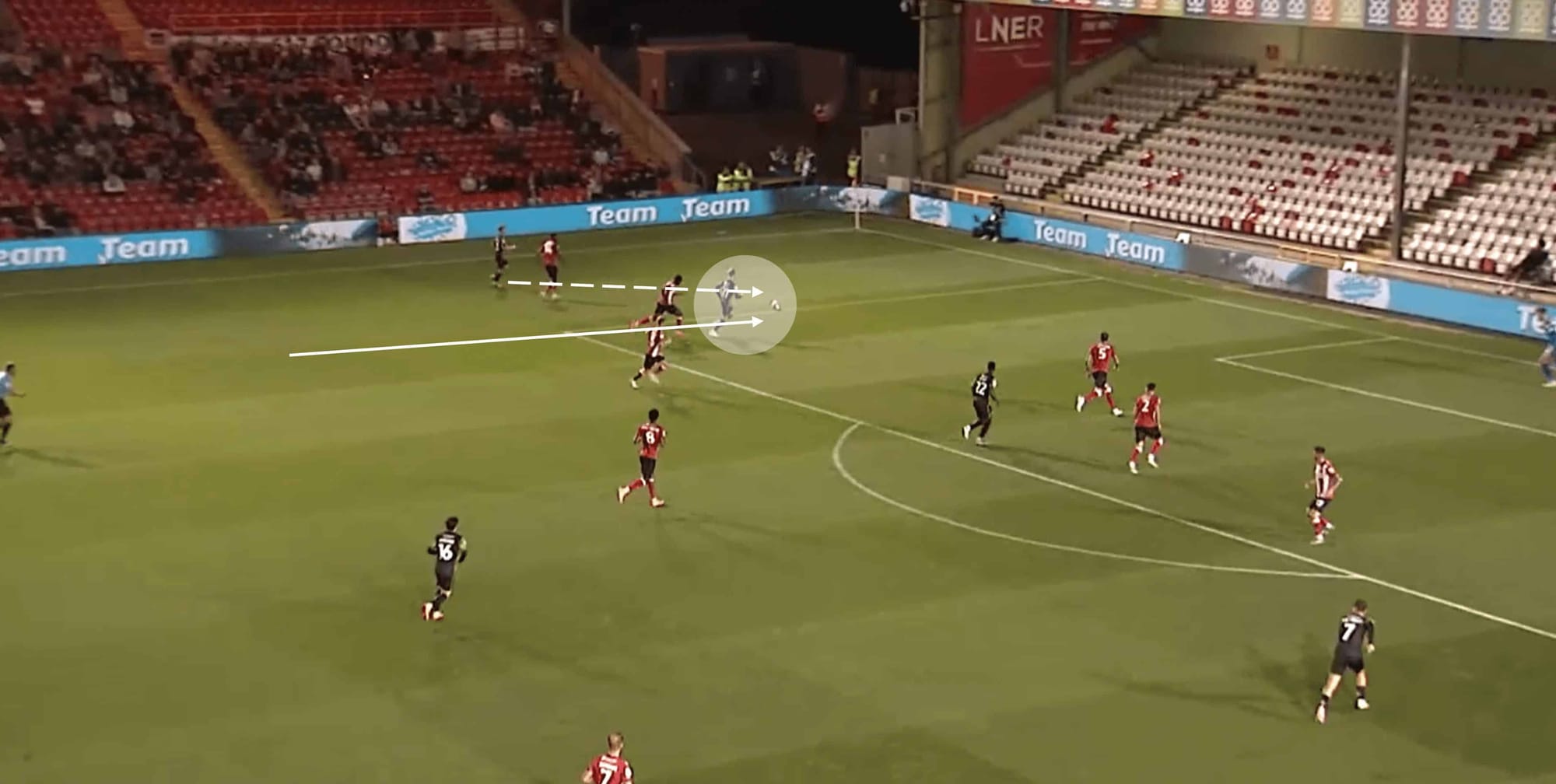
Here we see an example of Hurst’s awareness and vision. He begins the move with the ball in a deep position, under pressure from an opponent. As he plays a forward pass into a support teammate, we really see Hurst’s attacking intent and desire shine. Instead of lingering and providing close support to the teammate he passed to, he charges through the sea of opposition shirts to drift into an unmarked zone at the corner of the penalty area.
Hurst showed terrific vision to identify this space and recognise its potential and followed that by showing good speed and determination to get there first, giving him the edge when he receive the return pass just inside the box. In this case, his final product let him, and the attack, down – but credit where it’s due, this is another example of turning nothing into something.
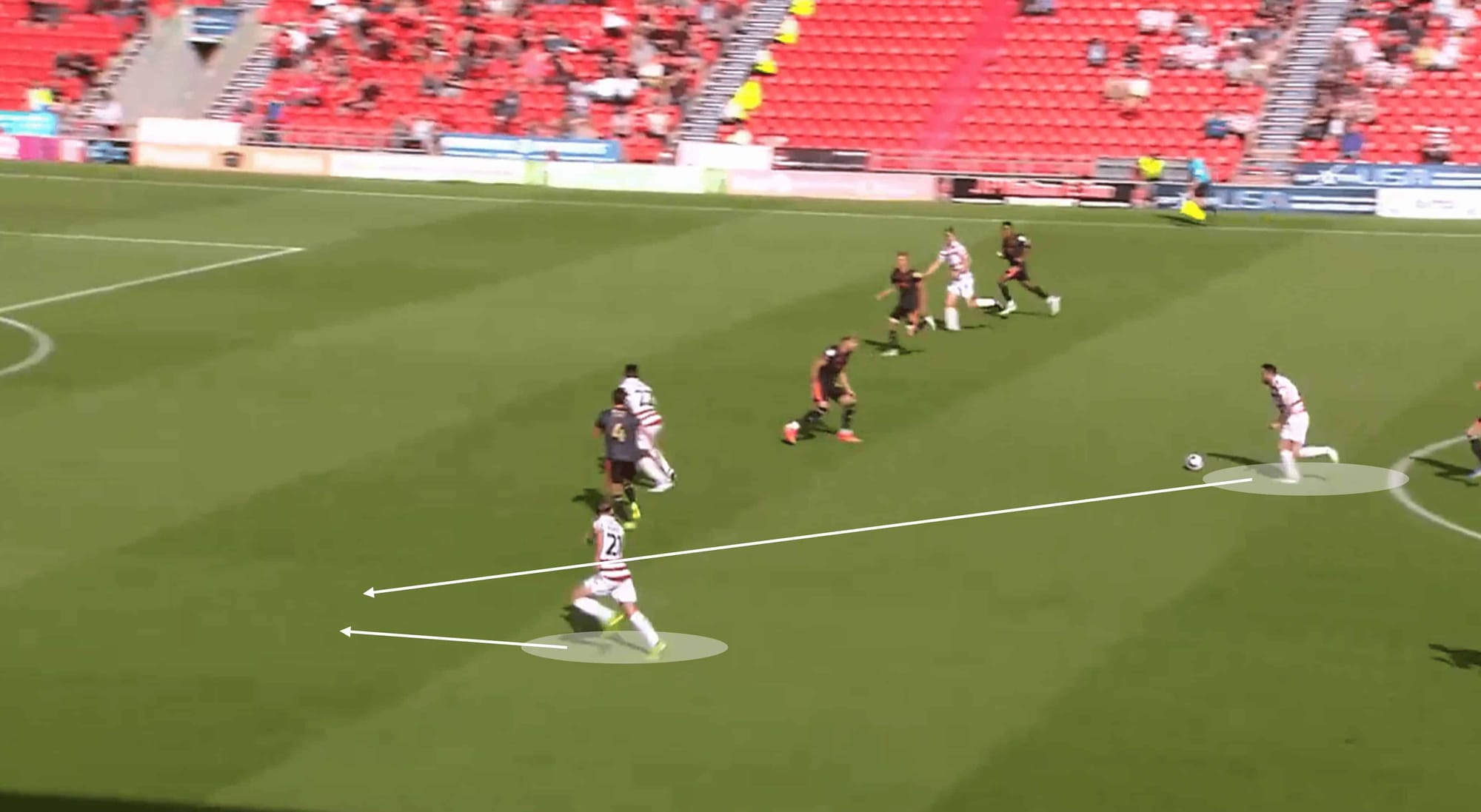
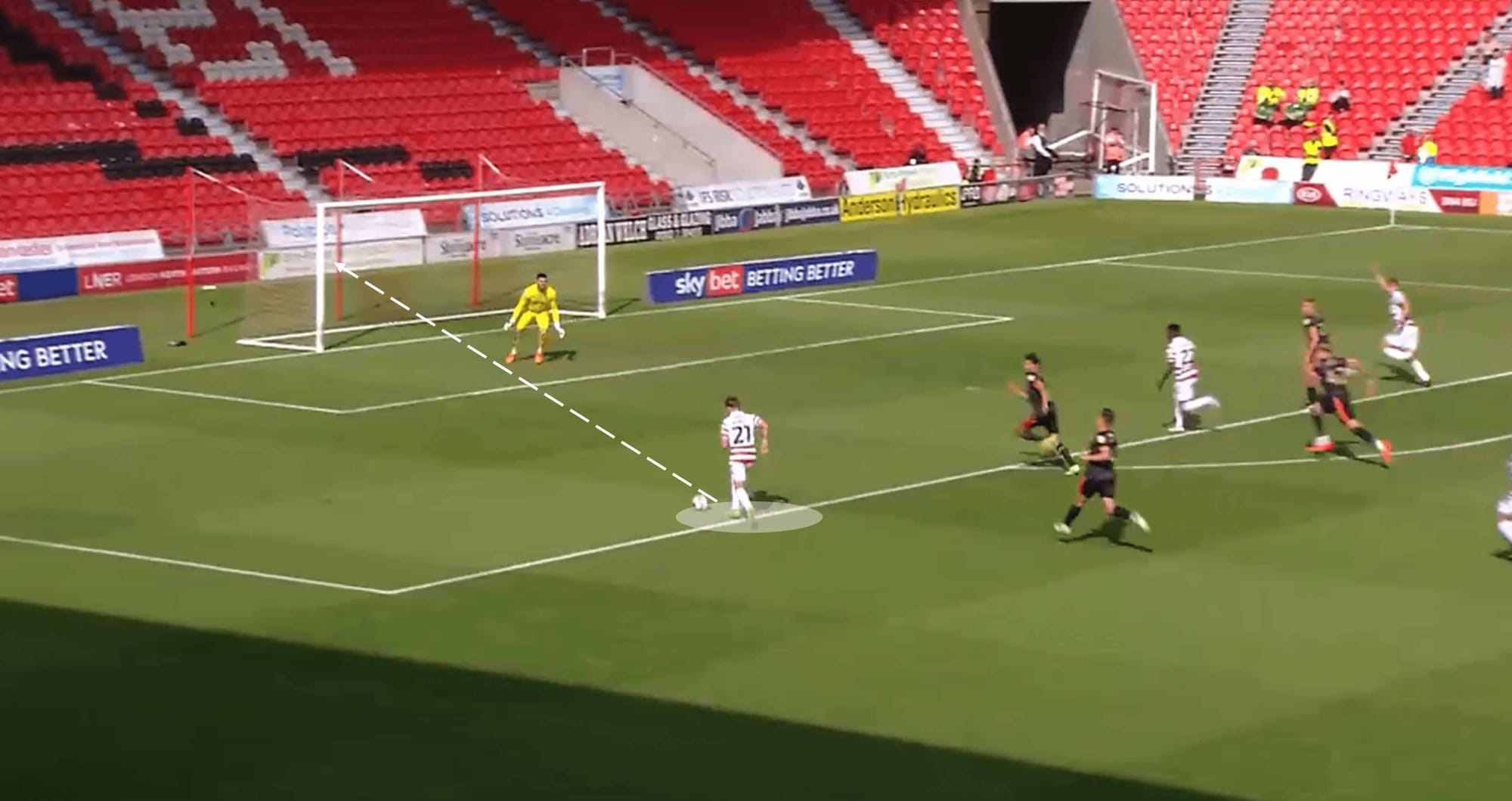
This final example of Hurst’s attacking contribution is a fine example of how deadly he can be in front of goal. The attack begins with Donny launching an attack after a transition, with Lee Tomlin driving forward with the ball from a central position. With three runners bursting forward in front of Tomlin, Hurst is the only one not marked – he keeps his run slightly wider to maintain the advantage and to ensure he has some space when the pass is played to him.
A positive first touch and a clear idea of what he wanted to do with the ball meant Hurst was in control of this situation. In the clip of the goal itself, you can see Hurst take a split second to analyse the keeper’s positioning – notice how he isn’t covering his near post as he is anticipating Hurst to try and curl a shot to the far post with his right foot. Hurst does well to notice this and opts to unleash a powerful strike into the roof of the goal on the near side: the keeper was given no chance of stopping it.
Conclusion
Doncaster Rovers could have a real gem on their hands with Kyle Hurst. A move that very few Rovers fans anticipated prior to his trial, but one that they are glad the club made. Hurst will only improve as he gets more game time.
His dribbling can be a nightmare for defenders due to his quickness and agility. His ability to comfortably use either foot adds the element of unpredictability to his game, while his goalscoring assets help too. As mentioned, there are areas for improvement in his game, most notably his tendency to try and do too much solo work at times. He will also look to add some assists to his record as the season goes on, but he deserves credit for the chances he does carve out.

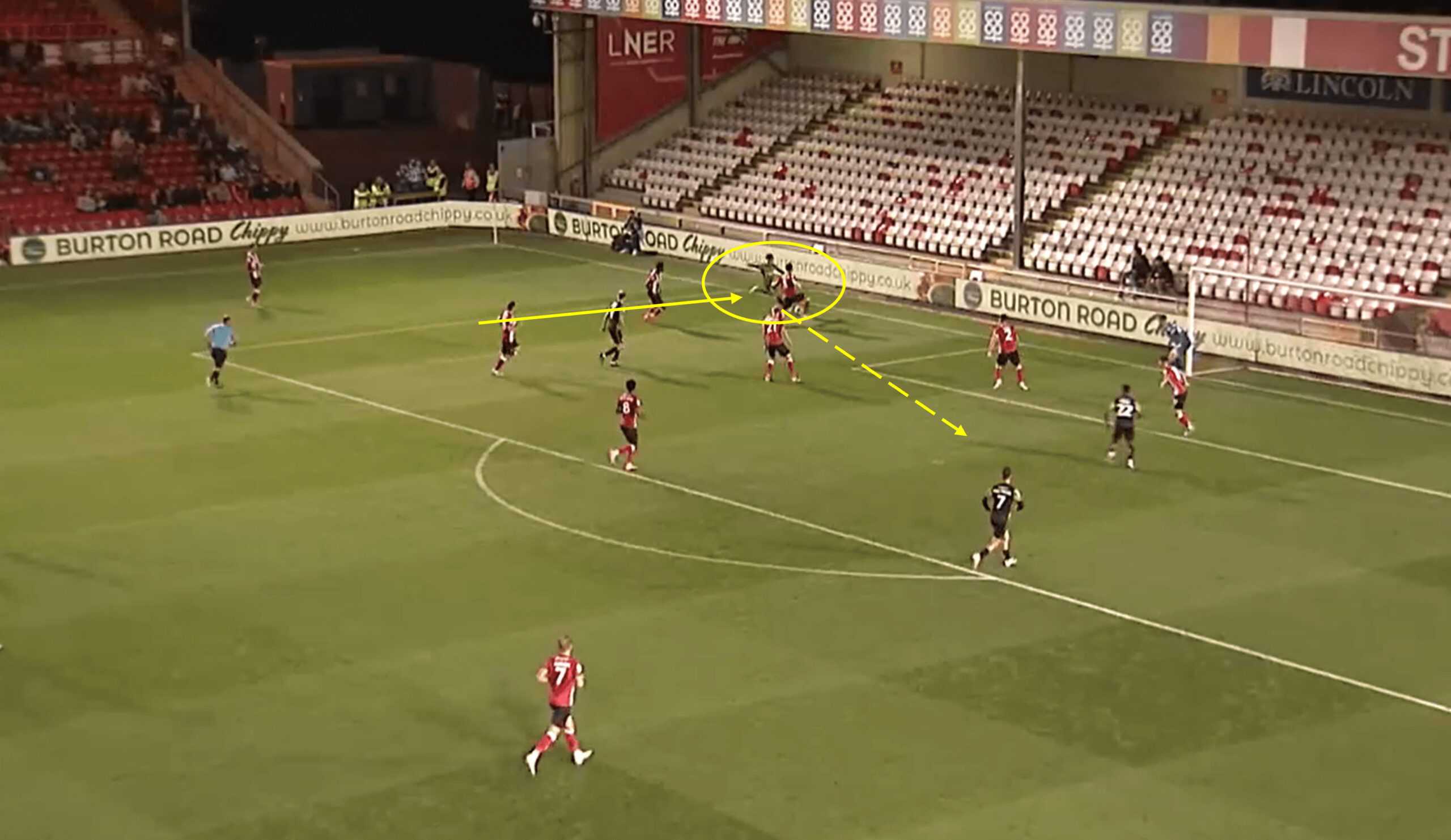




Comments